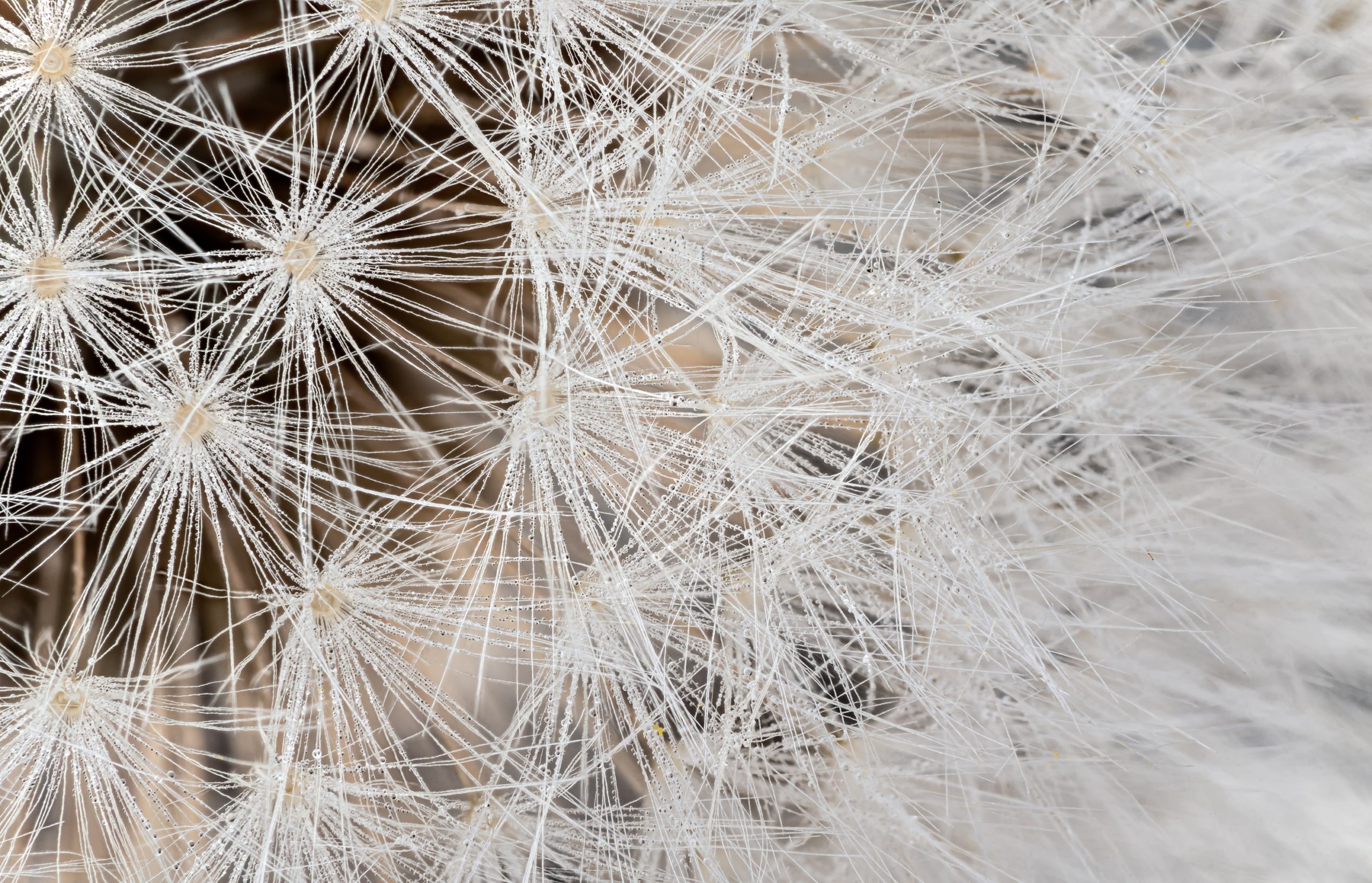
Gone are the days of fur and animal skins, not to mention overly polluting materials. The fashion industry has launched a frantic race to adopt green and animal-friendly fibres. Not a month goes by, it seems, without someone in the sector unveiling new materials with some surprising components – ranging from expired milk to dandelions – and all gradually shaping the wardrobes of the future.
Whether it’s a dress made of spider silk, a handbag made of mushrooms, or sneakers made of sugar cane or seaweed, the wardrobe of tomorrow could sound more like a natural history museum than a closet full of clothing. And yet, this is where the fashion industry is currently heading, as the sector searches for more environmentally and animal friendly fibres – two criteria that consumers now pay attention to before heading to the checkout.
And if some – sometimes age-old – materials are coming back to the forefront, like linen and hemp, for example, others are viewed as new-generation fibres, often arising from partnerships with biotech start-ups that turn nature’s riches into innovative and sustainable materials. Here’s a look at some of the unusual materials that are likely to make their way into our wardrobe in the next few years.
Spider silk puts a new spin on sustainable fabrics
Fear not, animal lovers! This does not involve putting our eight-legged friends to work seven days a week to make the sweaters and other clothing items of tomorrow. Secreted by spiders’ silk glands, these silk threads are not originally used to make clothes, but to allow these small hairy creatures to move around, build their homes, or create traps for their prey. But scientists have studied the mechanical properties and DNA structure of spider silk in the aim of creating new uses for the material and to produce it on an industrial scale.
Two companies, Bolt Threads and AMSilk, have both succeeded in producing lab-made silk inspired by that made by spiders. With Microsilk, Bolt Threads has already partnered with Stella McCartney and adidas to design a tennis dress from this next-generation silk, while AMSilk, with its Biosteel Fiber, is already behind several garments, shoes and accessories. Even more impressive, The North Face has put Spiber’s innovative silk to use in making an entire down jacket, the Moon Parka. Strong and durable, this silk could quickly become a wardrobe staple.
From out-of-date milk to biodegradable fibre
Incredible, but true! Out-of-date milk could also soon find its way into our wardrobes. Fibres based on the milk protein casein are far from new, since they were developed by an Italian chemist and engineer during the interwar period. However, they have recently come back to the forefront in order to drive down fashion’s impact on the environment. At the time, the discovery was intended to replace wool, today it’s (already) used in the composition of T-shirts or lingerie items.
Two birds, one stone. While the process established in the 1930s has been improved, it remains broadly the same. It involves using expired milk and transforming it into a natural and biodegradable textile. One of the world’s best-known such products is the QMilk textile, created by German entrepreneur Anke Domaske, who was looking for natural fibres for her father-in-law who was suffering from cancer. But since then, other brands have taken the plunge, like Germaine des Prés, which offers panties and nightdresses made using milk fibre, which is guaranteed to be antibacterial and 100% biodegradable.
Dandelion can be used to make new-gen rubber
If pineapple leaves, mushrooms, cactus, apple, grape or corn residues, seaweed and sugar cane have become commonplace in fashion collections – and we’re hardly even exaggerating – the dandelion could become a surprise contender in this increasingly crowded field. And it too has come a long way. The USSR previously examined the scope of its potential in the 1920s, before abandoning the idea. Then, the German company Continental that recently brought this flowering plant back into the spotlight, turned to dandelion root to manufacture its famous tires.
The stem of the plant is full of latex which, when it dries, turns into an elastic rubber substance, which could very quickly overshadow the traditional rubber tree. In fashion, the American brand Cole Haan has delved into the field, launching a pair of sneakers with an outsole partly made of dandelion rubber. The garden and the wardrobe are growing ever closer, it seems.
As well as all the sustainable materials mentioned above, coconut fibre, bamboo or lotus fibres are also helping to shape the future of fashion. It remains to be seen which ones will really stand out and revolutionise our closets forever. We’re placing our bets on lab-grown silk, mycelium – a material derived from mushrooms – fruit and vegetables (they’re always essential), and expired milk. All of which are well on their way to becoming the star materials of the future.
This story was published via AFP Relaxnews.


